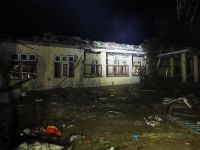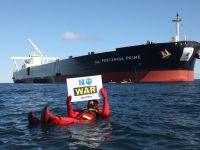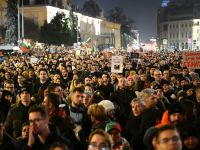The United Arab Emirates (UAE) is important to world energy markets because it contains 98 billion barrels, or nearly 10 percent, of the world's proven oil reserves. The UAE also holds the world's fourth-largest natural gas reserves and produces significant amounts of liquefied natural gas.
Note: Information contained in this report is the best available as of December 1999 and can change.
GENERAL BACKGROUND:
The United Arab Emirates is enjoying an economic recovery as a result of the rise in oil prices which resulted from OPEC production cuts in March 1999. While the UAE has a relatively diversified economy for a Persian Gulf oil exporter, the period of low oil prices in 1998 resulted in a decline in real gross domestic product (GDP) of 5.0 percent. Real GDP growth for 1999 is projected at 4.5 percent.
Political System:
The UAE is a federation of seven emirates - Abu Dhabi, Dubai, Sharjah, Ajman, Fujairah, Ras al-Khaimah, and Umm al-Qaiwain. Political power is concentrated in Abu Dhabi, which controls the vast majority of the UAE's economic and resource wealth. The two largest emirates -- Abu Dhabi and Dubai -- provide over 80 percent of the UAE's income.
In June 1996, the UAE’s Federal National Council approved a permanent constitution for the country. This replaced a provisional document which had been renewed every five years since the country’s creation in 1971. The establishment of Abu Dhabi as the UAE’s permanent capital was one of the new framework’s main provisions.
Other Industry:
In recent years, the UAE has undertaken several projects to diversify its economy and to reduce its dependence on oil and gas revenues. The non-oil sectors of the UAE's economy presently contrbute more than two-thirds of the UAE's total GDP. The federal government has invested heavily in sectors such as aluminum production, tourism, aviation, re-export commerce, and telecommunications.
As part of its strategy to further expand its tourism industry, the UAE is building new hotels, restaurants and shopping centers, and expanding airports and duty-free zones. Agriculture also makes up a significant portion of the UAE's economy. Dubai has become a central Middle East hub for trade and finance, accounting for about 70 percent of the Emirates’ non-oil trade.
Foreign Affairs:
The UAE and Iran continue to dispute the ownership of three islands, Abu Musa and the Greater and Lesser Tunb Islands, which are strategically located in the Strait of Hormuz. All three islands were effectively occupied by Iranian troops in 1992.
The Mubarak field, which is located six miles off Abu Musa, has been producing gas-rich oil since 1974. In 1995, the Iranian Foreign Ministry claimed that the islands are "an inseparable part of Iran." Iran rejected a 1996 proposal by the Gulf Cooperation Council (GCC) for the dispute to be resolved by the International Court of Justice, an option supported by the UAE.
In early 1996, Iran took further moves to strengthen its hold on the disputed islands.These actions included starting up a power plant on Greater Tunb, opening an airport on Abu Musa, and announcing plans for construction of a new port on Abu Musa. In the dispute, the UAE has received strong support from the GCC, the United Nations, and the United States.
Although Iran remains a continuing concern for officials in Abu Dhabi, they have chosen not to escalate the territorial dispute. Iran is one of Dubai’s major trading partners, accounting for 20 percent to 30 percent of Dubai’s business.
Relations between Saudi Arabia and the UAE also have shown some signs of strain in 1999, due to Saudi development of the Shaybah oilfield, with estimated reserves of 14 billion barrels of crude oil.
The UAE and Saudi Arabia do not have a precisely defined border in the sparsely populated desert separating them, and the Shaybah field straddles territory claimed by both governments. Saudi Arabia began production from the Shaybah field in late 1998. The UAE has demanded an agreement to share production from Shaybah.
OIL:
The UAE contains proven crude oil reserves of 97.8 billion barrels, or slightly less than 10 percent of the world total. Abu Dhabi holds 94 percent of this amount, or about 92.2 billion barrels. Dubai contains an estimated 4.0 billion barrels, followed by Sharjah and Ras al-Khaimah, with 1.5 billion and 100 million barrels of oil, respectively.
The majority of the UAE’s crude oil is considered light, with gravities in the 32o to 44o API range. Abu Dhabi's Murban 39o and Dubai's Fateh 32o blends are the UAE's primary export crudes.
Most of the UAE’s oil fields have been producing since the 1960s or early 1970s. Proven oil reserves in Abu Dhabi have doubled in the last decade, mainly due to significant increases in rates of recovery. Abu Dhabi has continued to identify new finds, especially offshore, and to discover new oil-rich structures in existing fields.
Under the UAE's constitution, each emirate controls its own oil production and resource development. Although Abu Dhabi joined OPEC in 1967 (four years before the UAE was formed), Dubai does not consider itself part of OPEC or bound by its quotas. Consequently, if Dubai were to produce at its full capacity, Abu Dhabi would have to adjust its output in order to keep the UAE within its OPEC production quota.
In response to the period of low oil prices in 1998 and early 1999, OPEC agreed in March 1999 to reduce output in an effort to shore up the price of crude. The UAE’s production quota was lowered to 2.00 million bbl/d. Actual production fell from a 1999 high of 2.25 million bbl/d in February 1999 to 2.05 million bbl/d in May 1999. In mid-1999, the UAE’s maximum crude oil production capacity was estimated at 2.7-3.0 million bbl/d.
Restructuring:
On October 12, 1998, the Abu Dhabi National Oil Company (ADNOC) announced a major plan to restructure its management. The plan consolidates ADNOC’s operations under five new directorates: Exploration and Production, Gas Processing, Chemicals, Marketing and Refining and Shared Services (Administration).
Refining:
The UAE has two refineries operated by ADNOC. The Ruwais refinery underwent a $100-million upgrade in 1995 and is now operating at 132,000 bbl/d, producing light products mainly for export to Japan and India. Fuel oil from Ruwais is sold as bunkers by ADNOC and used for domestic power generation.
A $1.2-billion second-phase Ruwais expansion will include a new 135,000-bbl/d crude distillation unit, a 130,000-bbl/d fractionation plant, and expansion of residual oil conversion facilities with a 40,000-bbl/d hydrocracker and a 36,000-bbl/d visbreaker.
[Fractionation is a process of separating various hydrocarbons from natural gas or oil as produced from the ground. Visbreaking is a thermal cracking process in which heavy atmospheric or vacuum distillation bottoms are cracked at moderate temperatures to increase production of distillate products and reduce viscosity of the distillation residues].
ADNOC plans to use the fractionation unit to process increased future condensate flows from the Bab and Asab fields. When completed in 2000, Ruwais’ total capacity will be around 475,000 bbl/d.
UAE has two smaller refineries. Umm al-Nar, in Abu Dhabi, is now running at 80,750 bbl/d. Since its construction in 1976, the Umm al-Nar plant has undergone debottlenecking as well as a recent expansion.
The refinery primarily supplies the domestic market. Metro Oil has a 75,000-bbl/d refinery in Fujairah. Another private refinery is planned for Dubai, which is scheduled to begin operating in mid-2000 and have a capacity of 40,000 bbl/d.
A new $300-million condensate refinery built by the Emirates National Oil Company (ENOC) began operation in May 1999. The plant, located in Dubai’s Jebel Ali Free Zone, produces 120,000 bbl/d of jet fuel, diesel, naphtha, and gasoline.
Foreign Downstream Operations:
In October 1998, the International Petroleum Investment Company (IPIC), the UAE’s downstream investment outfit, agreed to purchase 50 percent of the Hyundai Oil Refinery Company of South Korea for $500 million.
The UAE is the second-largest crude oil supplier to South Korea after Saudi Arabia, exporting 83 million barrels (15 percent of South Korea’s total imports) in the first eight months of 1998.
IPIC’s overseas holdings also include a 10 percent stake in Spain’s CEPSA and a 19.6 percent share of Austria’s OMV. CEPSA’s profits rose by 40 percent in 1997; OMV’s profits increased by 18 percent.
Source – United States Information Administration
© 2000 Mena Report (www.menareport.com)







